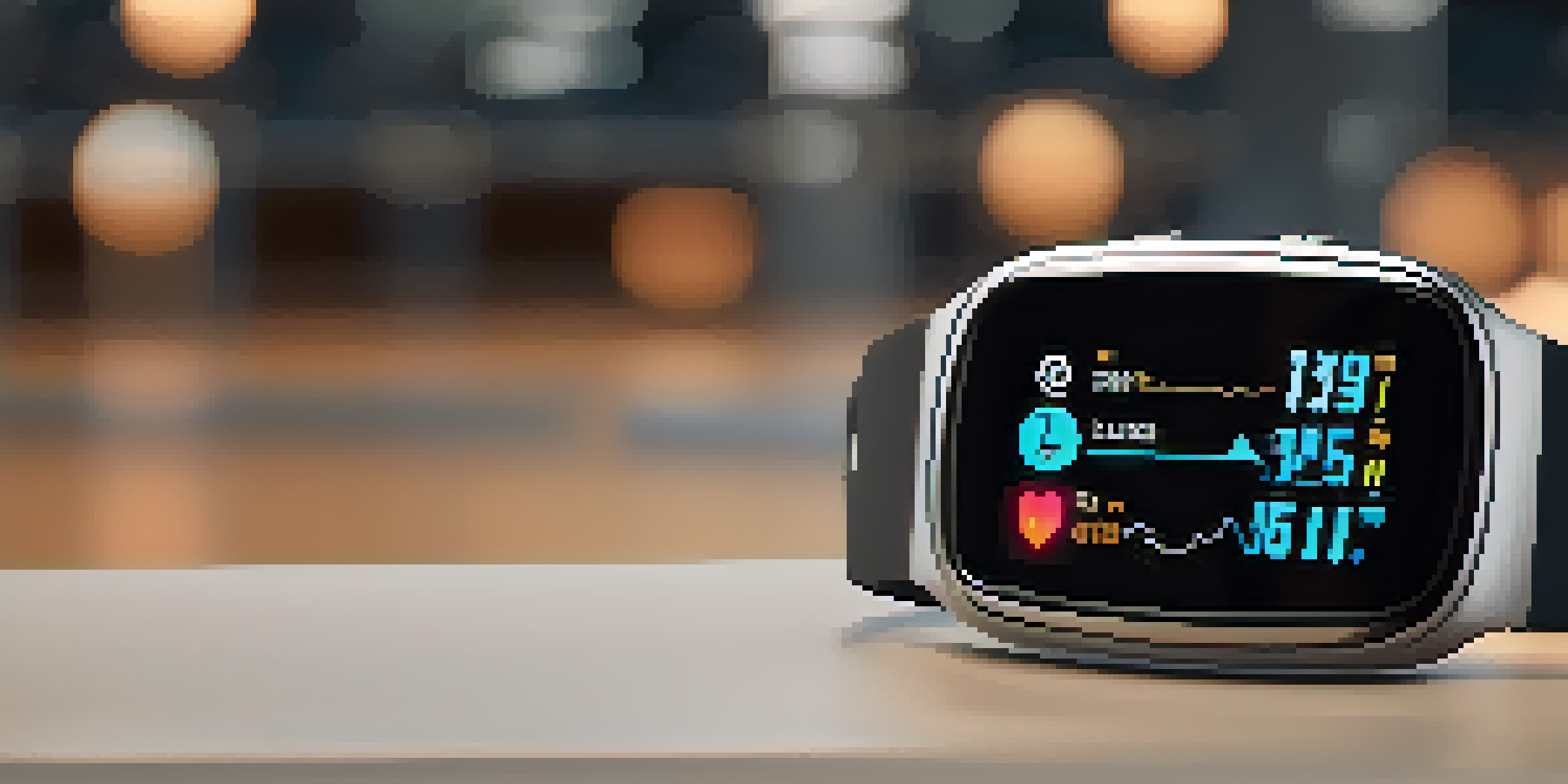Wearable Devices: Tracking Progress in Bodybuilding Effectively

Understanding Wearable Devices in Bodybuilding
Wearable devices have revolutionized how bodybuilders track their progress. These gadgets, which include smartwatches and fitness bands, provide real-time data that can help you optimize your training. From heart rate monitoring to calorie counting, they deliver insights that were once only available through cumbersome manual tracking.
Wearable technology is the bridge that connects data with decision making, allowing athletes to make informed choices about their training and recovery.
Imagine having a personal trainer on your wrist, offering feedback and motivation throughout your workout. Wearables can monitor your performance metrics, helping you adjust your training intensity for better results. With this technology, you can focus on your goals, knowing you have reliable data backing your efforts.
Moreover, wearables can also integrate with other fitness apps, creating a holistic view of your progress. This interconnectedness allows you to set and adjust your bodybuilding goals based on concrete data, rather than guesswork. It's all about making informed choices in your fitness journey.
Key Features of Wearable Devices for Bodybuilders
When choosing a wearable device, look for features that specifically cater to bodybuilding. Heart rate monitors, for instance, can help you ensure you’re training in the right zone for muscle growth. Additionally, GPS tracking is useful for outdoor workouts, allowing you to map your runs or bike rides while keeping track of your distance.

Another essential feature is sleep tracking, as recovery is crucial for muscle growth. Quality wearables can analyze your sleep patterns, helping you identify areas for improvement. By optimizing your rest, you can enhance your performance during workouts, leading to better results over time.
Wearables Enhance Training Insights
Wearable devices provide real-time data on performance metrics, enabling bodybuilders to optimize their workouts and make informed decisions.
Lastly, consider devices with customizable workout plans or guided workouts. These features can assist you in structuring your training sessions effectively, ensuring you're hitting all muscle groups. This personalized approach will keep your workouts varied and engaging, preventing plateaus in your progress.
Setting Realistic Goals with Wearable Technology
Wearable devices not only track your progress but also help you set realistic bodybuilding goals. Instead of vague resolutions, you can establish specific targets based on the data collected. For example, if your device shows you've increased your bench press by 10 pounds, you can aim for another 5-pound increase in the next month.
The future of fitness lies in the integration of technology and personal training, where data-driven insights empower individuals to achieve their goals.
This data-driven approach provides motivation as you can see tangible proof of your hard work. It’s like having a digital cheerleader encouraging you to push a little harder. You can celebrate small victories along the way, making the journey more rewarding.
Moreover, being able to adjust your goals based on performance data is invaluable. If you find a particular exercise isn't yielding results, you can tweak your approach. This adaptability is key in bodybuilding, as it allows for continuous growth and improvement.
Monitoring Recovery: The Unsung Hero of Bodybuilding
Recovery is just as important as the workout itself, and wearable devices excel in this area. Many wearables offer insights into your recovery status by monitoring heart rate variability and sleep quality. This information can guide you on when to push harder and when to take a step back.
Think of it like checking your fuel gauge; if you’re running low, it’s time to refuel. By understanding your body's signals, you can prevent overtraining, which is crucial for sustained progress in bodybuilding. This balance can ultimately lead to better performance and muscle growth.
Recovery Monitoring is Crucial
Wearables track recovery status, helping bodybuilders understand when to push harder or take a break to prevent overtraining.
Additionally, some devices provide recommendations for recovery activities, such as stretching or foam rolling. Incorporating these suggestions into your routine can enhance your recovery process and keep you injury-free. It's all about listening to your body and responding appropriately.
Integrating Wearables with Nutrition Tracking
For bodybuilders, nutrition is just as vital as exercise, and wearables can help with that too. Many devices sync with nutrition tracking apps, allowing you to monitor your caloric intake alongside your workouts. This integration helps ensure you’re fueling your body properly to support muscle growth.
Imagine having the ability to see how your meals correlate with your performance metrics. If you notice that certain foods improve your energy levels during workouts, you can adjust your meal plan accordingly. This insight can transform your approach to nutrition, making it a powerful ally in your bodybuilding journey.
By combining exercise data with nutritional insights, you can create a comprehensive strategy for success. It’s like having a complete roadmap to your goals, where every aspect—exercise, recovery, and nutrition—works together harmoniously.
The Social Aspect of Wearable Devices
One of the often-overlooked benefits of wearable devices is their social component. Many wearables allow you to connect with friends or join fitness communities, fostering a sense of accountability. This social engagement can motivate you to stick to your fitness routine and push yourself harder.
Imagine sharing your progress with friends who cheer you on or challenge you to new heights. This camaraderie can make bodybuilding feel less like a solo endeavor and more like a team sport. Plus, friendly competition can ignite a spark that drives you to achieve your goals faster.
Nutrition Tracking Complements Fitness
Integrating nutrition tracking with wearables allows bodybuilders to align their diet with workout performance for better results.
With features like sharing workout stats or participating in challenges, wearables create a supportive environment. This community aspect not only enhances motivation but also makes workouts more enjoyable. After all, fitness is often more fulfilling when shared with others.
Future Trends in Wearable Technology for Bodybuilding
As technology continues to evolve, so do wearable devices, especially in the realm of bodybuilding. Future innovations may include more advanced biometric sensors that provide deeper insights into muscle recovery and performance. Imagine wearables that can analyze muscle fatigue in real-time, allowing for immediate adjustments during workouts.
Additionally, artificial intelligence (AI) integration could personalize training plans even further. AI could analyze your performance data and suggest tailored workouts, ensuring optimal results. This level of customization can revolutionize how bodybuilders approach their training, making it more effective and efficient.

Moreover, advancements in materials could lead to even more comfortable and durable devices. This would encourage more athletes to adopt wearables, ultimately enhancing the bodybuilding community. The future of wearable technology is bright, with endless possibilities for improving performance and tracking progress.